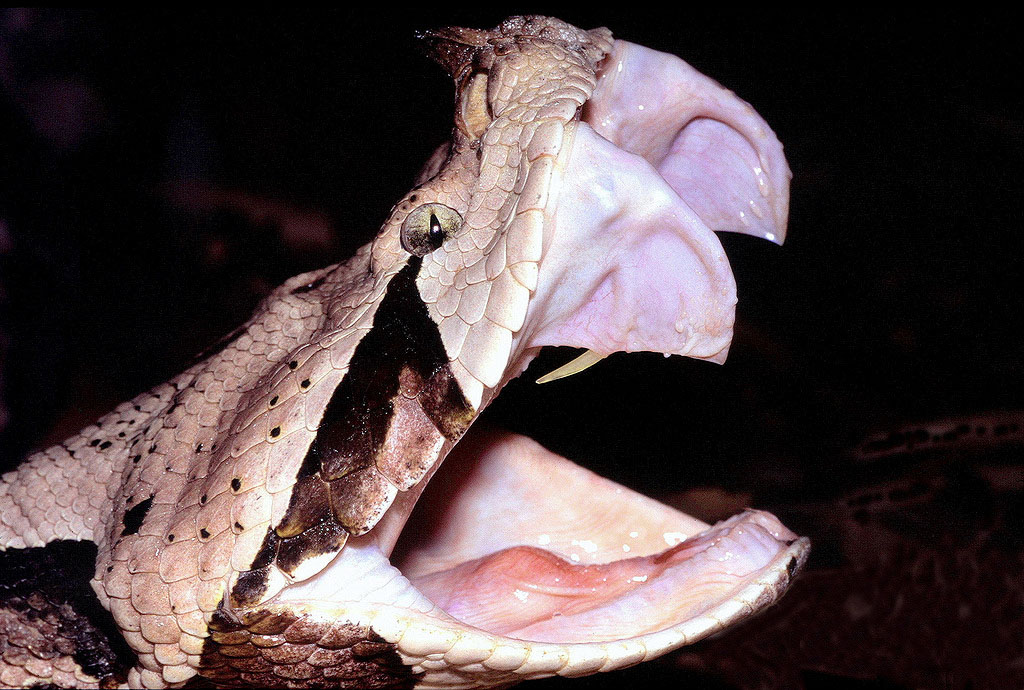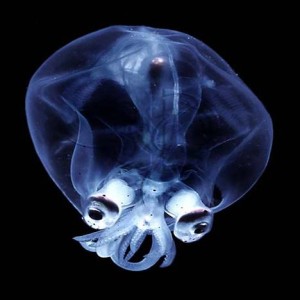The gaboon viper (Bitis gabonica) is a species of viper found in Africa. It is renowned for its long fangs. It is quite common in its range.
Physical Features
The gaboon viper is the world's largest viperid, weighing about 8 kilograms. It has the longest fangs of any snake, which can measure up to 5 cm. It is the longest African viper, ranging from lengths of 1 to 2 meters(3 to 6.6 feet). The gaboon viper has a flat, triangular head with two small, hornlike structures on its snout. It has a stout body with distinguishing geometric shapes like triangles, diamonds and rectangles. It has brownish skin with buffs of purple and pink. Its head is thick due to the large venom glands present behind its eyes. Its coloration allows it to blend with dried leaves which helps it ambush its prey.
Diet
The diet of a gaboon viper mainly consists of small mammals and birds. It can even consume full grown rabbits, porcupines and monkeys. There are even reports of it eating royal antelopes.
Habitat and Distribution
The gaboon viper lives in tropical forests and open woodlands. It lives on the forest floor where it camouflages among the leaf litters. The gaboon viper is only present in Africa. It is mainly in central, eastern and south eastern Africa with few isolated population in western Africa. Some countries in its range are Kenya, Uganda, Nigeria, Sierra Leone, Togo, Guinea, Mozambique, Ghana and Zimbabwe.
Behavior and Venom
 |
| The fangs of a gaboon viper. |
Life Cycle
Gaboon vipers are ovoviviparous (when the embryo develops in an egg and hatches inside the female itself) and give birth to litters of 60 young every 2 to 3 years. They have gestation periods of 3 to 4 months.
Conservation Status
Gaboon vipers are very common in their range.
Source of pic 1, pic 2









